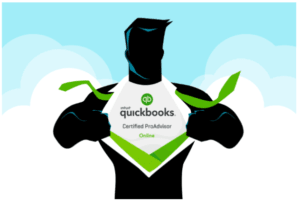
Liabilities refer to short-term and long-term obligations of a company. Liquidated damages are damages that are specified in a contract as a fixed amount. If a company fails to fulfill the obligations of the contract, it may be liable for liquidated damages. A constructive obligation is a requirement that arises from past events and cannot be avoided.
- This liability is also classified as a current liability since it is due within a year or the normal operating cycle.
- These may include loans, accounts payable, mortgages, deferred revenues, bond issues, warranties, and accrued expenses.
- He currently researches and teaches economic sociology and the social studies of finance at the Hebrew University in Jerusalem.
- Understanding the difference between current and long-term liabilities is crucial for grasping a company’s financial situation.
SG&A Meaning: Selling, General & Administrative Expenses (Definition)
Internal – It is payable to internal parties such as promoters (owners), employees etc. Boost your confidence and master accounting skills effortlessly with CFI’s expert-led courses! Choose CFI for unparalleled industry expertise and hands-on learning that prepares you for real-world success. CFI is the global institution behind the financial modeling and valuation analyst FMVA® Designation. CFI is on a mission to enable anyone to be a great financial analyst Accounting for Technology Companies and have a great career path.

What is a Liability, Examples, Types, its Placement, etc?
Contingent liabilities are a special type of debt or obligation that may or may not happen in the future. The most common example of a contingent liability is legal costs related to the outcome of a lawsuit. For example, if the company wins the case and doesn’t need to pay any money, the company doesn’t incur the contingent liability. However, if the company loses the lawsuit and needs to pay the other party, the contingent liability takes effect and the company must cover it.
#1 – Current Liabilities

But armed with this essential info, you’ll be able to make big purchases confidently, and know exactly where your business stands. Your liabilities are any debts your company has, whether it’s bank loans, mortgages, unpaid bills, IOUs, or any other sum of money that you owe what is a liability in accounting someone else. A liquidity measure that a company uses to cover short-term loans using cash and cash equivalent is known as the cash ratio. A normal operating cycle is the time frame needed to convert money to raw materials, finished products, sales, accounts receivable, and money back again. This decision is very crucial as they might still be owing current debts to be paid shortly.
Deferred Revenue
The ordering system is based on how close the payment date is, so a liability with a near-term maturity date will be listed higher up in the section (and vice versa). Along with the shareholders’ equity section, the liabilities section is one of the two main “funding” sources of companies. Unlike the assets section, which consists of items considered cash outflows (“uses”), the liabilities section comprises items considered cash inflows (“sources”).

This time frame might be short-term or long-term, which are the two main types of liabilities. Understand the essentials of lease accounting, focusing on liabilities, right-of-use assets, and their impact on financial statements. The accounting equation is based on the premise that the sum of a company’s assets is equal to its total liabilities and shareholders’ equity. It’s a core concept in modern accounting that provides the basis for keeping a company’s books balanced across a given accounting cycle.
- The recognition of contingent liabilities is important because they can have a significant impact on a company’s financial statements and overall financial health.
- She has more than five years of experience working with non-profit organizations in a finance capacity.
- Examples of common long-term liabilities include bonds payable, mortgages, leases, deferred taxes, pension obligations, and lines of credit.
- If a contingent liability becomes an actual liability, it may reduce the company’s profits and, therefore, the amount of dividends that can be paid to shareholders.
- Recording a liability requires a debit to an asset or expense account (depending on the nature of the transaction), and a credit to the applicable liability account.
- Adam received his master’s in economics from The New School for Social Research and his Ph.D. from the University of Wisconsin-Madison in sociology.
Accountants also need a strong understanding of how liabilities function within an organization’s finances. Accounting processes often involve examining the relationships between liabilities, assets, and equity and how these things affect a business’s profitability and performance. If the accounting equation is out of balance, that’s a sign that you’ve made a mistake in your accounting, and that you’ve lost track of some of adjusting entries your assets, liabilities, or equity. It might not seem like much, but without it, we wouldn’t be able to do modern accounting.
